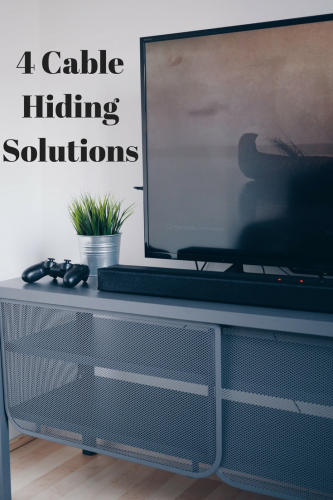
As much as we might love and rely on our tech products, there’s no denying that they have a downside: the cables. When your home only has a select number of outlets — and a thousand and one different things you need to plug into them — then you can find yourself waging a constant battle against the cable monsters. Few things will spoil the seamless look of an interior like a cable snaking along the wall.
While it’s undoubtedly important to you that your home be beautiful, it also needs to maintain a level of practicality. Whether you’ve chosen to see Optimum for details on a new digital TV package or just want to dot your interior with attractive table lamps, there’s no getting around the fact that you’re going to have to learn to work with the cables in a way that allows your home to be useful as well as attractive. Below are six different ways you can hide the evidence of practicality that won’t get in the way of the overall style you’re trying to achieve.
1) Hide Cables Behind Furniture
The simplest option is often the easiest to integrate. Opt to hide cables behind solid furniture such as bookcases or even your couch. There might be a mess of cables hidden from view, but sssh, no one needs to know about that!
The one downside of this is that open furniture — furniture with exposed legs and space beneath it — will prevent you from being able to use this technique.
2) Use Plastic Trunking
Plastic trunking is unobtrusive and effective, if you don’t mind having to glue plastic to the wall. The trunking can be lined above your baseboards; it’s usually self-adhesive, and then the front slides off so that you can place cables inside and hide them neatly away. This is a good option if you have to run cables a long distance from the outlet. Make the plastic less offensive to the eyes by either painting it or covering it with decorative tape.
3) Build False Walls For TV Cables
The cabling needed for your TV can be the most obtrusive of all, which is why building a false wall to hide this particular cable monster behind can be worth the effort. It’s a big job, and one you might need a professional for, but the end result can be gloriously seamless.
4) Run Cables Behind Baseboards
The one downside of running cables behind baseboards is that this solution isn’t particularly useful for items you may one day want to swap; for example, lamps and other decorative pieces. This technique is best reserved for items you’re going to have in place for a long time, such as your TV or any portable heaters.
Given that you can’t live without cables, it’s vital to find a decorating strategy for ensuring you can live with them. Choose from one of the above options and do the best you can; get it right, and your home will be able to blend style and functionality to perfection.





Mia says
We just hide our cable behind furniture but I thing the plastic trunking idea would be useful.
Shane A says
Number 3 is the ideal way to go. Plastic housing is what I use now. Looks a little better but I’d like to try the false wall idea.
Laura Collins says
I like the plastic trunking or building a fglse walls.